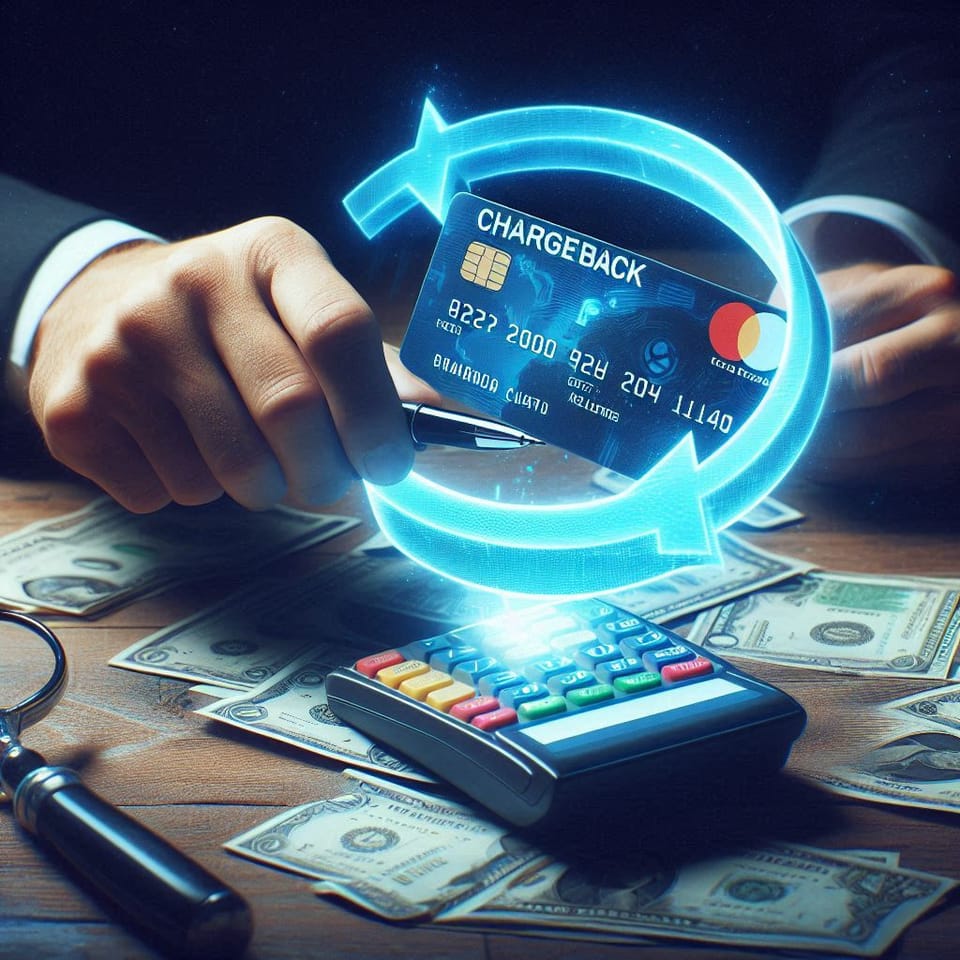The Hidden Cost of Chargeback Fraud in B2B Payments—and Why Automation Alone Won’t Fix It

Chargeback fraud is a growing problem in B2B payments, costing companies billions annually. While automation helps, it's not a silver bullet. For payment leaders, this isn't just a fraud issue. It's a business problem that hits revenue, customer relationships, and operational costs.
And the real challenge? The nuances of chargeback fraud in B2B payments make it fundamentally different from consumer payments, requiring a design-first approach alongside strategic automation.
Let's break this down. Why is chargeback fraud so difficult to fully automate? What are the real limitations, and where can automation shine? And most importantly, how can strategic design turn this from a cost center into a growth lever?
Why Chargeback Fraud in B2B Payments Is Harder Than You Think
Before we dive in, let's quickly recap what chargeback fraud is. In essence, it's when a customer disputes a legitimate charge with their bank or credit card company, claiming it was unauthorized or fraudulent when it wasn't.
This results in a forced refund from the merchant, often accompanied by additional fees and penalties. While chargebacks serve a vital consumer protection role, they can be exploited, turning a safety net into a tool for fraud.
In B2B payments, chargeback fraud takes on a new level of complexity. Unlike consumer transactions, where chargebacks often involve relatively small amounts and straightforward purchases, B2B deals can involve intricate contracts, large sums, and multiple stakeholders. This complexity makes detecting and preventing fraud significantly more challenging.
Chargebacks were originally designed for consumer protection—think about disputing a fraudulent charge on your credit card. In the consumer world, automation makes sense: flag suspicious transactions, compare patterns, and resolve disputes quickly. But in B2B payments, everything is more complex.
Here's why:
Longer Sales Cycles & Custom Contracts
B2B transactions aren't instant. A company might pay upfront, but delivery could take months. If a dispute arises, how do you automate a chargeback when terms are buried in a 20-page contract?
Multiple Decision-Makers & Layers of Approval
Unlike a consumer purchase, where one person buys and pays, B2B deals involve finance teams, procurement officers, and legal departments. Who has the final say in a dispute? Automation struggles when decision-making isn't centralized.
High-Ticket Transactions & Relationship Risks
B2B payments are often five, six, or seven figures. A single chargeback isn't just a lost transaction—it can sever a business relationship. Automating a chargeback decision without human judgment can cost a company more in lost revenue than the disputed amount itself.
Fraud That Looks Like Business As Usual
Recent reports show that digital fraud is increasing by 15% annually. Fraudsters are getting smarter, mimicking real business behavior to bypass automated fraud checks. A scammer posing as a supplier doesn't look suspicious—until the invoice gets disputed months later.
The Real Problem: Poor Design, Not Just Fraud
Another layer of complexity is that chargeback fraud doesn't look the same everywhere. How companies handle disputes depends on their region's regulatory framework, business norms, and payment infrastructure.
The knee-jerk reaction to chargeback fraud is to tighten controls—more authentication, more fraud rules, more automation. But here's what often happens:
- Genuine customers get caught in fraud filters, leading to lost sales.
- Companies bury chargeback prevention in legal fine print that no one reads.
UX suffers as businesses add more friction to payments, driving customers to competitors with smoother experiences.
Better design means building smarter payment flows that:
- Make fraud harder without annoying real customers.
- Use context-aware authentication instead of one-size-fits-all security.
- Turn chargeback prevention into a business advantage, not just a compliance checkbox
How Strategic Design Mitigates the Chargeback Fraud Problem
Transparent & Interactive Payment Flows
Instead of easily forgotten traditional invoices, consider real-time payment portals where both buyers and suppliers confirm details at multiple points. This reduces disputes before they happen.
Adaptive Authentication
Not every transaction needs the same level of security. A repeat buyer with a five-year history? Low friction. A new supplier from an unfamiliar country? More checks. Smart design personalizes risk management without adding unnecessary hassle.
Better Dispute Resolution User Experience (UX)
Most companies treat chargeback resolution like a black hole—users file a claim and hear nothing for weeks. A well-designed system provides real-time updates, clear next steps, and integrates with existing workflows, reducing frustration and lost business.
The Business Case: Design as a Cost-Saving and Growth Lever
An exceptional user experience (UX) isn't just about making things easy—it's a time-tested and sound financial strategy. We know that companies using AI-powered solutions recover 4 times more revenue from chargebacks. Moreover, automated systems can reduce operational costs related to chargebacks by 45%.
Consider this: 52% of customers file chargebacks without even contacting merchants first. This highlights a critical need for better communication channels and user-friendly dispute processes. By focusing on these areas, companies can significantly reduce unnecessary chargebacks and associated costs.
What You Should Consider As a Leader
While automation plays a crucial role, reducing costs by 45% when implemented effectively, it's not enough on its own.
The complexity of B2B transactions requires a combination of smart automation and strategic UX design. With this approach, you can:
- Prevent fraud without driving away real customers.
- Improve payment experiences while strengthening security.
- Turn chargeback prevention from a cost center into a potential growth driver.
If your company still treats chargebacks as a back-office issue instead of a UX challenge, you're likely leaving money on the table.
At WDIR, we specialize in solving complex B2B payment problems through a design-led philosophy. If you’re ready to reduce fraud, improve user experience, and drive real business growth, let’s talk.
Contact us today!
